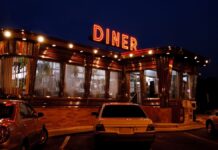Best Betting Sites Not on BetStop Australia (2024): Top 10 Non-BetStop Bookmakers for Aussies
Self-excluded but still want to bet? The best betting sites not on BetStop in Australia come in clutch!
Whether you’re after competitive odds in the...
Euro 2024 Betting Odds – Top Winner Odds for the UEFA European Cup (UK...
This year’s biggest football tournament is about to kick off, and from the looks of the Euro 2024 odds already posted in some popular...
Best Property Management Companies in New Jersey: All You Need To Know
If you are a landlord in New Jersey with a rental property, chances are you thought about getting someone or a tool to handle...
Exploring Why New Jersey is the Diner Capital of the USA
New Jersey's status as the diner capital is deeply rooted in its history of diner manufacturing, which has significantly shaped American diner culture.
New...
2024 NHL Trades: Analyzing Key Player Moves and Strategic Impacts on Teams
The 2024 NHL trade deadline saw strategic acquisitions that significantly increased team performances. Teams added key players to bolster their playoff chances and address...







